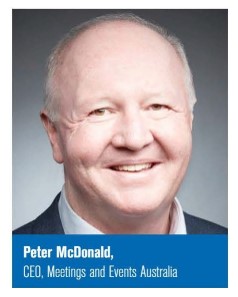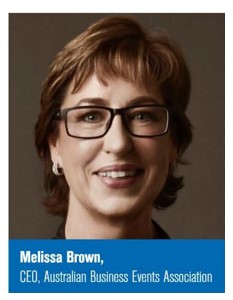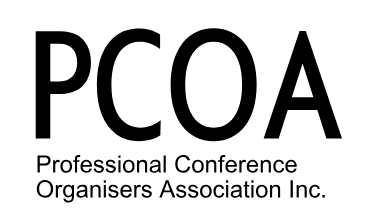THE NEW INDUSTRY ASSOCIATION LANDSCAPE
Following tough times during the pandemic, the landscape of associations representing the events industry has undergone a seismic shift. So, where are we now?
In 2023, the five members of the Business Events Council of Australia (BECA) unanimously voted to dissolve the organisation that had been responsible for advocating for the industry since 1994. This followed a review undertaken by BECA ‘to create a better resourced organisation to deliver the research, advocacy, and training essential to the growth of the industry’. Subsequent work by a consulting firm culminated in the formation of the Australian Business Events Association (ABEA).
The new association was founded off the back of the closure of the Exhibition and Event Association of Australasia (EEAA) and the Association of Australian Convention Bureaux (AACB), with support from the Australian Convention Centre Group, comprising Australia’s largest centres. These groups became the founders of the new association in mid-2023, which aims to provide a consolidated peak body for the business events industry and become the voice of the industry.
The original goal of this shakeup was a full unification of all the associations representing the business events industry. Over the years, there have been calls across the sector for a single association. A 2022 survey, flagged by ABEA upon its launch, had 84 per cent of respondents indicating a preference for a single body making representations to government. ABEA also pointed to ‘inefficient use of industry funds’ through the existence of multiple associations providing similar services.
However, Meetings and Events Australia (MEA) and the Professional Conference Organisers Association (PCOA) say there is still a role for them to fill, thwarting ABEA’s aim of being the single industry entity.
micenet spoke to the heads of all three associations to gauge how we got here, what the future holds for each association and how we navigate this new era of representation and member services.
 The visions
The visions
“Our vision is to be and to be recognised as the heart of the Australasian events community,” says MEA CEO, Peter McDonald.
“We want to be at the centre of pumping the energy around the industry.”
McDonald says this new vision is still “a work in progress” and that MEA wants to expand beyond Australia, including up into Southeast Asia. “We haven’t 100 per cent defined it, but at this stage our longer term vision is to be Australasian.” The strategic planning the association is undertaking is underpinned by four pillars: sustainable growth, leadership, connection and empowerment.

Over at the PCOA, the vision remains steady.
“Our focus and vision hasn’t really changed and I think that’s been one of the strengths of PCOA,” says PCOA president, Barry Neame.
“We haven’t tried to go into areas that aren’t core to our objectives. Our focus remains on education and skilling of our constituents and our members, to ensure that they are respected as professional practitioners, which is what we’ve consistently had a narrative around – respected in the same way that accountants and lawyers are respected as professional practitioners.
“We want to demonstrate to the community and to government…that conferences and events are a great economic driver for local economies and communities and we’re able to showcase the best research and the best technology that’s going around and that leaves a legacy in communities and cities.”

ABEA
At ABEA, the vision is “that the business events industry is creating economic impact back to Australia,” says new CEO, Melissa Brown.
“As far as [our] mission, it’s around member prosperity…so providing what we can to the members to support them in their businesses to prosper, and in turn, therefore answer the vision of having impact in Australia.”
Proving value
Neither PCOA nor MEA put to a vote amongst their members the idea of shutting up shop in favour of ABEA becoming the sole association in the business events space.
PCOA’s membership model is different to the other two associations – only PCOs and event organisers are eligible for membership. Suppliers become business partners.
“We have a large, committed, strong support base, a strong brand in the marketplace,” says Neame.
He says the model for ABEA “wasn’t focussed on what we believed were the key characteristics of a new organisation – advocacy, research”.
Neame also points to PCOA’s ongoing success and support from the wider business events industry as proof of demand for PCOA’s continued existence.
“Our conference and all of our activities have grown and grown. We’ve got bordering on 400 members at the moment.
“We’ve got a pipeline of destinations that want to host PCOA [conferences] from Australia and New Zealand all the way out to 2028 or 2029. I think that demonstrates the strength of our brand and our community and the value proposition that we bring to the table,” he says.
A bid by Brisbane Economic Development Agency and The Star Brisbane will bring this year’s conference to the S3.6 billion Queen’s Wharf development.
At MEA, McDonald says “too many of our members stood to be non-represented” if the association dissolved itself.
“It was made clear to us during the conversations that the new association would only exist for business events. MEA’s membership from day one has been about the national events industry – that’s for events of all natures. We are there for the national events industry.”
When micenet asks how MEA is servicing or advocating for public events, McDonald says the education, networking and awards program the association provides is relevant no matter the event type.
“We don’t necessarily advocate for any particular type of event,” he says. “We’re there with the interests of the full industry, not any particular
subsegment – we don’t discriminate, we’re there for the people who put the events on, the venues or destination where events are held or the suppliers to industry and that’s across any type of event.
“We will continue to do that. It’s been reassured to us that we should do that, both anecdotally and through the renewal of membership and the sign-up of new members that we experience.”
MEA’s board made the decision to continue the association’s existence. MEA released a statement around the time ABEA was launched, flagging their remit to support the full events industry.
“We’ve taken some confidence that when the board made its decision and issued the [statement]…there was a lot of positive comment and support received…for the decision being taken,” says McDonald.
As of mid-January, ABEA’s corporate membership sits at 125. McDonald says MEA does not disclose its membership numbers. Both associations also have membership options for individuals.
Less than a year into existence, ABEA is in member recruitment mode. Brown, along with the board and the 17 committee chairs, are proactively engaging with the industry to grow membership across all areas of business events, from PCOs to the major hotel groups and the myriad of small businesses which make up the sector.
‘There’s more opportunity than we can run at, at the moment,” says Brown. “Not just from a membership perspective but the offerings and the member services that we can be putting out there.
“It’s about finding out what is beneficial for the members and it’s going to be different things for different people.
“You’ve just got to have those constant conversations and find out what people want and what they see as value, and sometimes it will group around a particular subsector of the industry, or sometimes it might group around the size of the business, it just depends.”
In terms of proving its worth to the industry as a new association, Brown believes that has already started, but that it’s a work in progress.
“I think we have already proved value and worth because it was something the industry asked for and it’s been created and so there’s already a real swell of enthusiasm to make it work.
‘The fact that I’ve been asked to sit on different advisory boards and attend certain roundtables as the representative for the industry is a good sign that the industry and the government are looking at that unification as being successful and that we’re the representative,” she says.
A spirit of collaboration
Between the three associations, a theme of collaboration has already emerged, particularly on the advocacy front.
‘The door’s open,” says Brown. “I’ve already had meetings with both [MEA and the PCOA] and said we’re open to collaborate on anything that they want to do.”
“We will always act in the best interests of our members,” says McDonald. “We have collaborated with other associations before.
“We will work with any association…where there’s benefit to be gained for our members.”
“PCOA will continue to collaborate with all of our industry sector organisations, including ABEA,” says Neame. “We’ve got an open communication [with ABEA] and with MEA as well.”
Neame says the desire for more ongoing industry advocacy arose during the pandemic. As both he and McDonald point out, there wasn’t much of a need for advocacy before 2020 – the industry was growing strongly on its own steam.
“Some people put it to me that this will happen again,” says Neame. “So let’s position ourselves from the learnings from COVID, and make sure that we are well positioned if that happens again and for the future prosperity of our industry sector.”
“We need to learn a lesson from the pandemic,” agrees McDonald.
‘There will always be things happening in the world and what we as an industry need to do is to be forward thinking – what’s the next big thing that’s going to affect our industry?”
